Player FM 앱으로 오프라인으로 전환하세요!
Curious Juneau: Why does Alaska’s Capitol building have a ground floor?
Manage episode 372132840 series 1457379
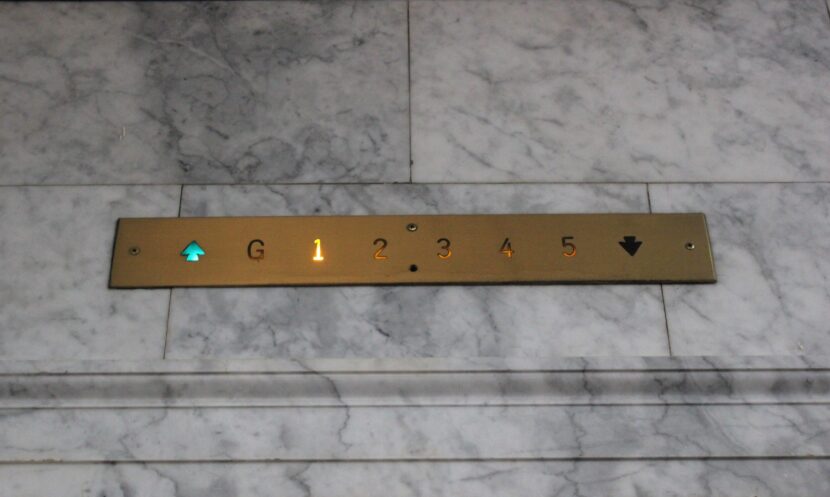
When Americans walk into a multi-story building, they’d usually say they’re on the first floor. Not in the lobby of Alaska’s Capitol building.
“It has a very European feel to it,” tour guide Kirk Smith said on a recent morning tour. “Right now, you are not on the first floor, you are on the ground floor. And the reason for that is that, as a multi-agency federal building, it was required to have a post office in it.”
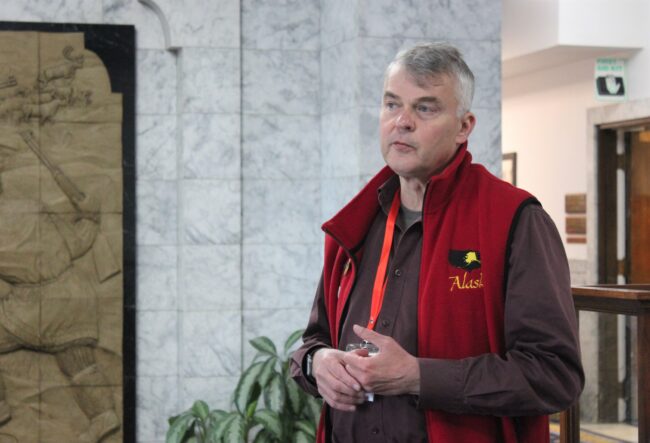
Smith said visitors often wonder why that is. KTOO listener Sylvan Robb asked us to find out for this installment of Curious Juneau.
The Capitol was built in 1931. That was before statehood, so it was built to serve as a federal and territorial building. The post office was on the second of six stories, but Juneau’s steep streets still made it possible to put entrances and loading docks on that floor — on the uphill side, on 5th and Seward Streets. So the architects called that the first floor and called the one below it the ground floor.
“In order to meet the post office’s requirements of having a first floor street entrance, they had to call this the ground floor,” Smith said in the lobby.
The doorway to Seward Street is still there, though the post office is long gone. When Alaska became a state in 1959, the building became the state Capitol. In the years that followed, the post office and other federal offices moved to the newly constructed Juneau Federal Building.
“There’s nothing of it left,” Smith said. “It would be nice if there was an antique post office box or a teller window or something, but there’s really nothing there. It just looks like a hallway. It’s too bad.”
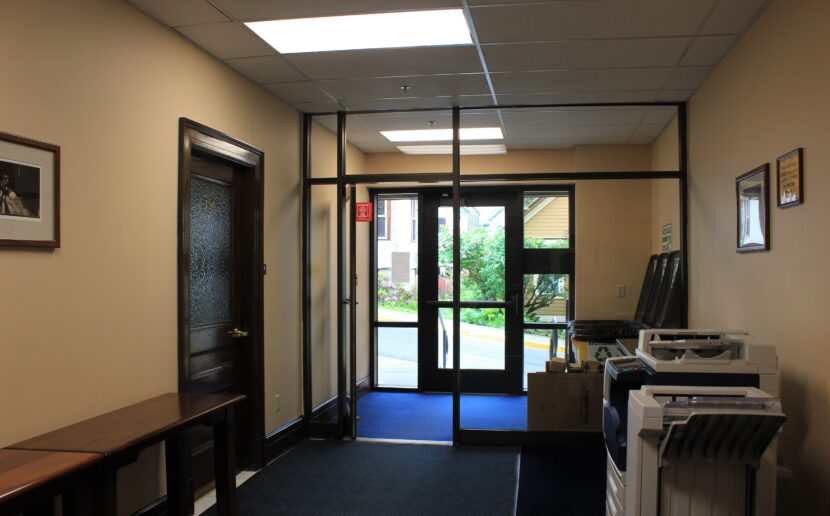
One lingering sign of the building’s history, though, is its art deco style.
“I like to refer to the architectural style that’s in use here as ‘early 20th century American post office,’” Smith said.
Like many other federal buildings and post offices built during that time, the Capitol was designed by the Treasury Department’s Office of the Supervising Architect.
That office’s designs have come in handy for local architect Wayne Jensen. He’s been involved in many projects at the Capitol over the years, including renovations of the House and Senate chambers and remodels of committee rooms. Most recently, he oversaw seismic upgrades throughout the building, which took years of work between legislative sessions.
That’s when Jensen saw one remnant of the old post office.
“When we did the demolition, we found a door that was kind of closed into one of the walls,” he said. “I don’t remember if it said ‘post office’ on it, but that was the one thing we did find.”
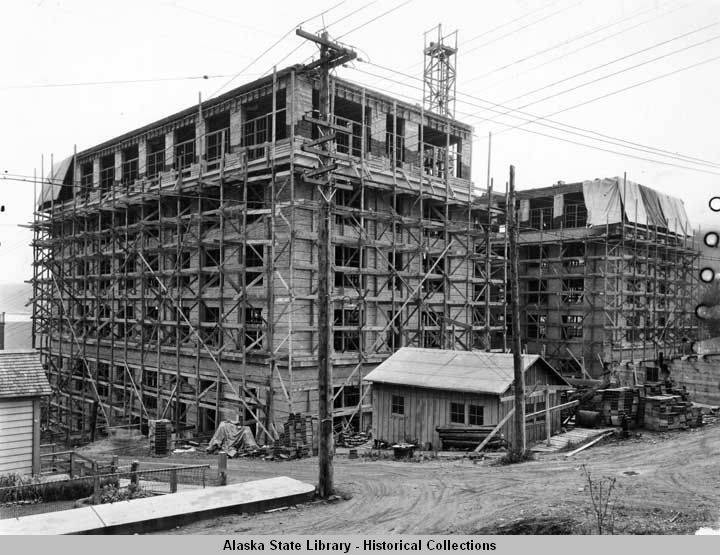
Jensen has studied the original architects’ ink-on-linen drawings. He said putting the post office on the first floor makes sense – that floor is bigger than the ground floor, and it has better street access.
“The ground floor isn’t as large as the other floors,” Jensen said. “It goes back into the mountain, back into the hill, so it’s truncated a little bit. Plus it has the boiler rooms and all those things that are not really occupiable spaces. But the first floor has access on the back side of the building and on Seward Street.”
According to the building’s original floor plans, the door to Seward Street was an employee entrance and the one to 5th Street was the public entrance. The post office lobby and work room took up the entire east wing of the first floor. Postal workers would sort the incoming mail in the workroom and feed it into post office boxes.
“I know stories from people who lived here in the ‘50s, ‘60s – they would go there every day to get their mail and it became a social area,” Jensen said.
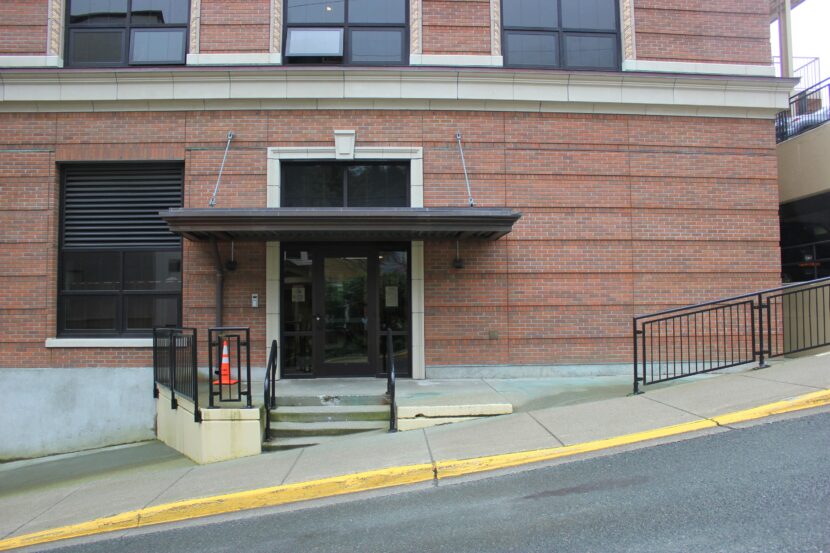
Jensen said the history of the Capitol building is worth remembering. Before construction started, Congress only allocated enough money to pay for half of the block where the building stands today. Juneau residents raised the rest of the money and then gave the property to the federal government.
“The community got together and said, ‘Well, if the feds can’t do it, we can do it ourselves,’” Jensen said. “It’s very Juneauite. Over the years, we’ve done a lot to keep the Capitol here and support the Capitol, and that was one of the first efforts to do that.”
The post office may be a nearly-forgotten piece of the building’s history. But it’s why today’s visitors need to pay extra attention to what floor they’re on inside the Capitol.
Curious Juneau
Are you curious about Juneau, its history, places and people? Or if you just like to ask questions, then ask away!
- What do you want to know about Juneau?
- Name*First Last
- Email*
- Phone
- Zip Code ZIP / Postal Code
- CAPTCHA
20 에피소드
Manage episode 372132840 series 1457379

When Americans walk into a multi-story building, they’d usually say they’re on the first floor. Not in the lobby of Alaska’s Capitol building.
“It has a very European feel to it,” tour guide Kirk Smith said on a recent morning tour. “Right now, you are not on the first floor, you are on the ground floor. And the reason for that is that, as a multi-agency federal building, it was required to have a post office in it.”

Smith said visitors often wonder why that is. KTOO listener Sylvan Robb asked us to find out for this installment of Curious Juneau.
The Capitol was built in 1931. That was before statehood, so it was built to serve as a federal and territorial building. The post office was on the second of six stories, but Juneau’s steep streets still made it possible to put entrances and loading docks on that floor — on the uphill side, on 5th and Seward Streets. So the architects called that the first floor and called the one below it the ground floor.
“In order to meet the post office’s requirements of having a first floor street entrance, they had to call this the ground floor,” Smith said in the lobby.
The doorway to Seward Street is still there, though the post office is long gone. When Alaska became a state in 1959, the building became the state Capitol. In the years that followed, the post office and other federal offices moved to the newly constructed Juneau Federal Building.
“There’s nothing of it left,” Smith said. “It would be nice if there was an antique post office box or a teller window or something, but there’s really nothing there. It just looks like a hallway. It’s too bad.”

One lingering sign of the building’s history, though, is its art deco style.
“I like to refer to the architectural style that’s in use here as ‘early 20th century American post office,’” Smith said.
Like many other federal buildings and post offices built during that time, the Capitol was designed by the Treasury Department’s Office of the Supervising Architect.
That office’s designs have come in handy for local architect Wayne Jensen. He’s been involved in many projects at the Capitol over the years, including renovations of the House and Senate chambers and remodels of committee rooms. Most recently, he oversaw seismic upgrades throughout the building, which took years of work between legislative sessions.
That’s when Jensen saw one remnant of the old post office.
“When we did the demolition, we found a door that was kind of closed into one of the walls,” he said. “I don’t remember if it said ‘post office’ on it, but that was the one thing we did find.”

Jensen has studied the original architects’ ink-on-linen drawings. He said putting the post office on the first floor makes sense – that floor is bigger than the ground floor, and it has better street access.
“The ground floor isn’t as large as the other floors,” Jensen said. “It goes back into the mountain, back into the hill, so it’s truncated a little bit. Plus it has the boiler rooms and all those things that are not really occupiable spaces. But the first floor has access on the back side of the building and on Seward Street.”
According to the building’s original floor plans, the door to Seward Street was an employee entrance and the one to 5th Street was the public entrance. The post office lobby and work room took up the entire east wing of the first floor. Postal workers would sort the incoming mail in the workroom and feed it into post office boxes.
“I know stories from people who lived here in the ‘50s, ‘60s – they would go there every day to get their mail and it became a social area,” Jensen said.

Jensen said the history of the Capitol building is worth remembering. Before construction started, Congress only allocated enough money to pay for half of the block where the building stands today. Juneau residents raised the rest of the money and then gave the property to the federal government.
“The community got together and said, ‘Well, if the feds can’t do it, we can do it ourselves,’” Jensen said. “It’s very Juneauite. Over the years, we’ve done a lot to keep the Capitol here and support the Capitol, and that was one of the first efforts to do that.”
The post office may be a nearly-forgotten piece of the building’s history. But it’s why today’s visitors need to pay extra attention to what floor they’re on inside the Capitol.
Curious Juneau
Are you curious about Juneau, its history, places and people? Or if you just like to ask questions, then ask away!
- What do you want to know about Juneau?
- Name*First Last
- Email*
- Phone
- Zip Code ZIP / Postal Code
- CAPTCHA
20 에피소드
모든 에피소드
×플레이어 FM에 오신것을 환영합니다!
플레이어 FM은 웹에서 고품질 팟캐스트를 검색하여 지금 바로 즐길 수 있도록 합니다. 최고의 팟캐스트 앱이며 Android, iPhone 및 웹에서도 작동합니다. 장치 간 구독 동기화를 위해 가입하세요.




